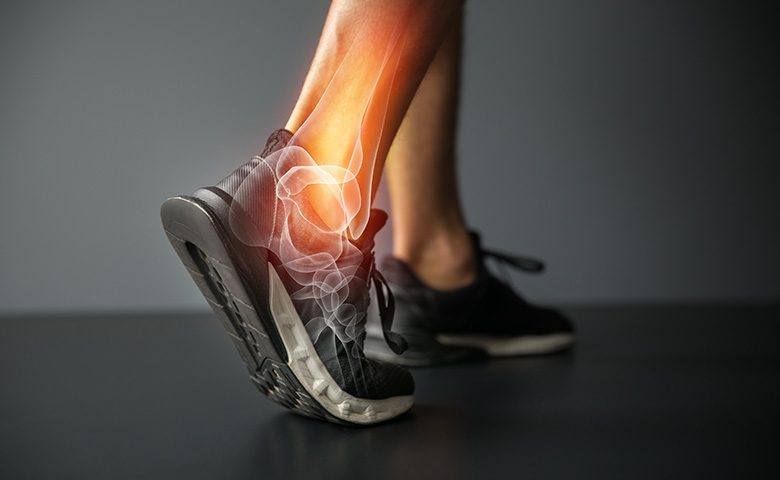Across all industries, workers spend an average of 57% of the workday on their feet. But that time is rarely distributed evenly among people, or evenly between sitting and standing. Generally, a worker spends the majority of their day either on their feet or sitting down. And when workers do split their time between sitting and standing, they often have to be on their feet for long stretches before they then have to sit for a while. Given this, foot safety is an important part of EHS measures in any workplace.
Foot hazards largely fall into two camps: 1) either the work environment contains hazards such as slip, trips and falls, or heavy machinery, or 2) the worker’s role dictates they spend the majority of their workday on their feet, which can cause physical stress and injury. The best practices for guarding against foot hazards will depend on the nature of the work environment. If your company is in food prep and service, landscaping and maintenance, production, construction, personal care or health care, workers most likely spend the majority of the day on their feet and will be at increased risk of foot strain or injury. Employees in computers and mathematics, business and finance, legal or office settings will spend their days seated and are less likely to be exposed to as many foot hazards, but their static working position can take a physical toll over time.
Given all that, there are three areas that you should consider for reducing the risk of foot injuries. Keep in mind that workplace health and safety guidelines and controls should always reflect their environment in order to be effective.
Comfortable feet
In many cases, comfortable feet are safer feet. Often, workplaces can improve foot safety by consistently communicating to employees the importance of ensuring their feet are comfortable throughout the workday. It’s a good idea to train supervisors to do what they can to reduce stress on the feet that could lead to short-term pain and long-term damage. Potential solutions do not have to be expensive or time-consuming for the employer. They can be as simple as providing small breaks throughout the day so employees have a chance to rest their feet at regular intervals.
Encourage workers to come forward to their supervisor or health and safety representative if they are experiencing pain or discomfort. Key messaging should reassure staff that those who do come forward will not be penalized in any way, but rather will be supported and accommodated. Additionally, consider making foot safety a regular topic in your workplace’s toolbox talks or short safety meetings. In a compassionate manner, warn staff that unreported and untreated foot discomfort and pain can easily lead to other significant and less treatable health problems, and can affect their lifestyle away from work.
Foot care awareness and prevention strategies
Workers should be educated on how to be proactive with foot care, with an emphasis on strategies to keep their feet healthy. Teach employees about common afflictions like:
- blisters
- infections (athlete’s foot, toenail fungus)
- ingrown toenails
- sprains
- aches and pains
- fallen arches
- corns
- bunions
- rheumatism
- arthritis
Reassure staff that these are very commonplace ailments and can happen to anyone. If they suffer any of these conditions, encourage workers to be proactive, flag the issue, and seek treatment. Hiding or not treating these ailments can exacerbate the injury and lead to more serious health problems.
The most effective strategies to guard against these common foot problems include:
- wearing appropriate footwear that is comfortable and breathable
- regularly washing feet with soap and water to keep them clean
- taking adequate rest breaks to sit and relax, and get off feet if required
- regularly getting up, moving around and stretching if work requires long periods of sitting or inaction
The responsibility falls both on the employer and the employee to take foot safety seriously and make the effort to prevent foot ailments. Worker responsibilities include the practice of good hygiene, wearing appropriate footwear and being aware of hazards in the workplace. Employer responsibilities include identifying workplace hazards, raising awareness of those hazards to staff, implementing workplace controls to limit worker exposure to those hazards and advising or providing appropriate PPE, including foot protection if required.
Footwear as PPE
Workplaces that present significant hazards to workers, such as some commercial and industrial settings, require the employer to ensure workers are wearing protective footwear. Footwear in these environments is considered PPE, and not simply footwear, and regulations need to be more formal. Workers need to be informed of the kind of protective footwear required and the workplace should develop a health and safety training program where workers are educated on the hazards present and how protective footwear guards against incidents and injuries. This is a general requirement across all workplaces with significant hazards, but do your due diligence and research industry-specific legislation, as there may be other further requirements. Make sure you’re accounting for all the major factors that influence PPE use among employees.
When members of the workplace are mindful of foot safety and aware of the risks around them, the likelihood of an incident plummets. To that end, ensure you’ve identified specific foot-related hazards and developed strategies to guard against them and educate staff about them. These strategies can range from developing a formal PPE plan to changes in environmental design. When new strategies are adopted, be sure to solicit feedback and conduct ongoing reviews to evaluate their effectiveness. As with all health and safety issues, there is no finish line, but as long as there is a spirit of care and an eye on improvement, you can be confident you’re taking steps in the right direction.

